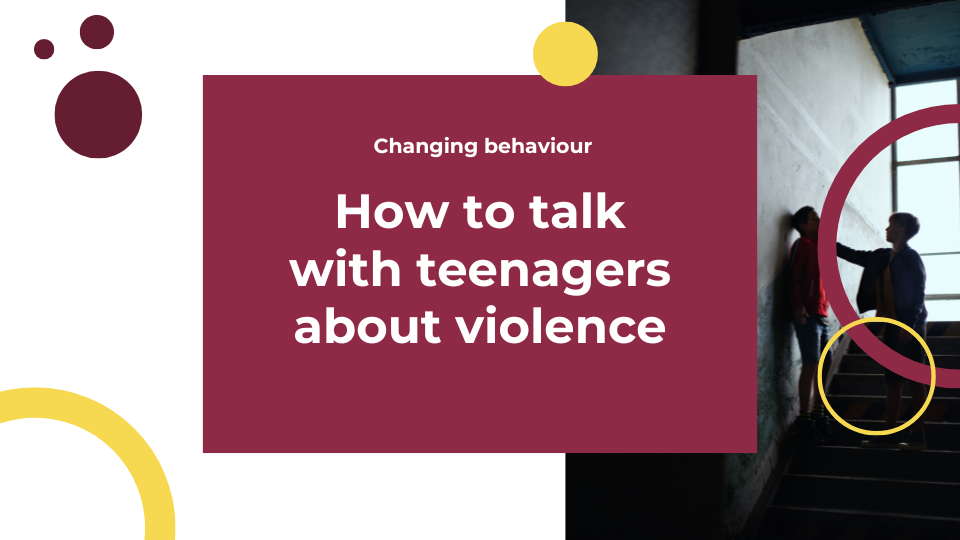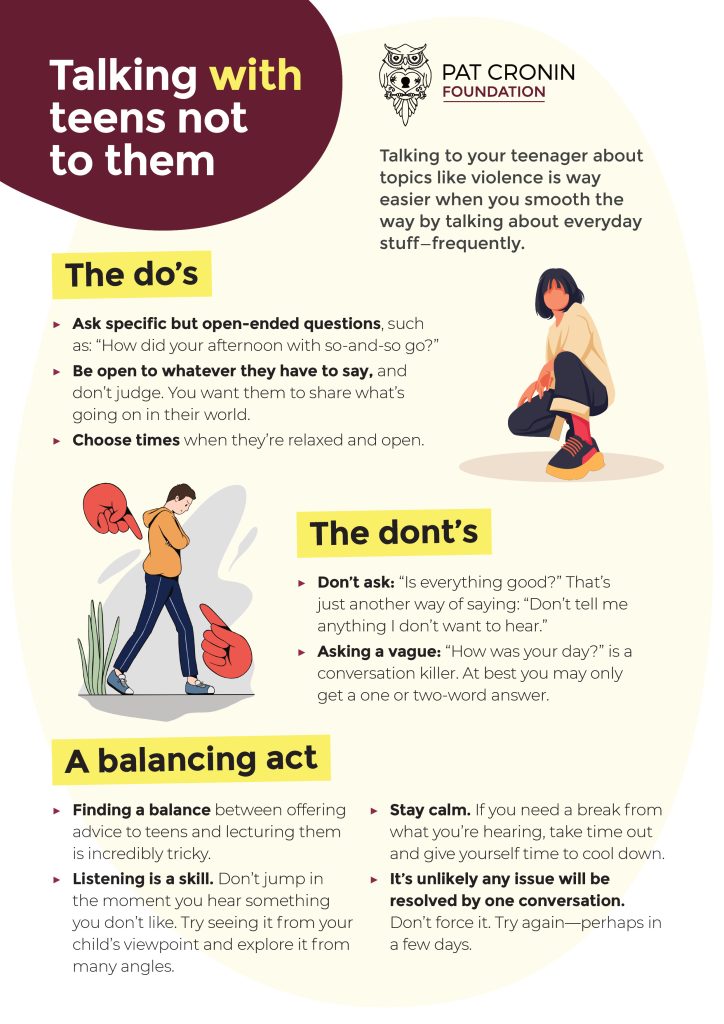
Teaching our children to handle anger and confrontations is crucial. It could literally save lives – maybe theirs, maybe someone else’s.
Our own research – based on one of the largest surveys of its kind in the country – reveals that:
- Nearly a quarter of 17,000 high school students like to watch fights at school
- 21 per cent believe that fighting can be a way to have fun
- 26 per cent believe that some things need to be solved by force.
While what happened to Pat is an extreme example, one in four brain injury hospitalisations are people aged 15-24 (according to Australian brain Injury organisation Synapse).
The Pat Cronin Foundation is working to create safer communities, and we
believe opening up conversations with your children about violence is important.
Foundation General Manager Dr Geoff Smith shares some key tips for talking with kids about this tough subject.
Talk frequently with your teenager about everyday stuff
Establish a habit of talking with your child about all the everyday stuff and the things that interest them before you take on the big topics.
The more you engage with them, the more likely they are to open up and share information with you.
Research also shows that positive communication with teenagers supports their mental health.
Choosing your moment:
Before you tackle a difficult conversation, choose a moment when the atmosphere is calm, and both you and your child are relaxed. If the conversation is about violence, you can also seize on instances when your child sees something in the media or a conflict at school.
Remember, it’s highly unlikely that any issue will be resolved by one conversation. Don’t force it. Try again – perhaps in a few days.
Hone your listening skills:
Listening properly is hard to do well.
Don’t jump in the moment you hear something you don’t like.
Try to see the topic from your child’s point of view and explore it from many angles without coming across as judging or being prescriptive – which can be really tricky.
It doesn’t mean you have to go along with harmful behaviour, because talking to them about limits is invariably necessary as they develop their independence. You do however want them to own positive changes to their attitudes.
You can show someone you’re listening to them by maintaining eye contact, nodding in understanding and repeating their thoughts back in conversation. Avoid trivialising their emotions, and try to cultivate a sense of trust and openness.
Stay calm
If you’re upset by what you’re hearing, take time out to cool down.
If you’re coercive or sound as if you are interrogating them, they’re likely to clam up.
Have in place a plan to debrief with a trusted adult such as a partner or another parent. You don’t have to take about the ins and outs of the conversation as confidentiality is important to teens. You can however talk about your feelings and vent.
Authenticity is king
Communicating good values is as much about living them as talking about them.
Lead by example in your household. Demonstrate problem-solving to your kids by never letting anger progress to aggression – including raising your voice, slamming doors, throwing things and making threats.
Ask the right questions
Say you were having a conversation with your teenager about violence in the schoolground or in a social setting, such as a sporting match. The Pat Cronin Foundation’s own research in this area reveals alarming findings around attitudes to students fighting for “fun”, watching fights, and teasing classmates
When approaching the subject, ask open-open ended questions that encourage critical thinking and self-reflection.
These might be:
- How do you feel when you hear about violence at school or in the news?
- How do you feel when you’re angry? What happens to your body or your mind?
- Can you think of a time when you felt angry but didn’t act on it. What did you do instead?
- What are some healthy ways to cope with anger?
- How do we recognise when other people are feeling angry, and what can we do to help?
- Do you know what to do when you feel scared or unsafe?
How to respond:
It’s a conversation, so you need to share and respond – as well listen.
Walk your child through why you respond to a situation in certain ways, and elaborate on how you would work things out without resorting to violence.
Be careful however not make arbitrary pronouncements. While you’re likely to receive some huffs and puffs, you will at least know you’ve given them the tools to make wise decisions.


